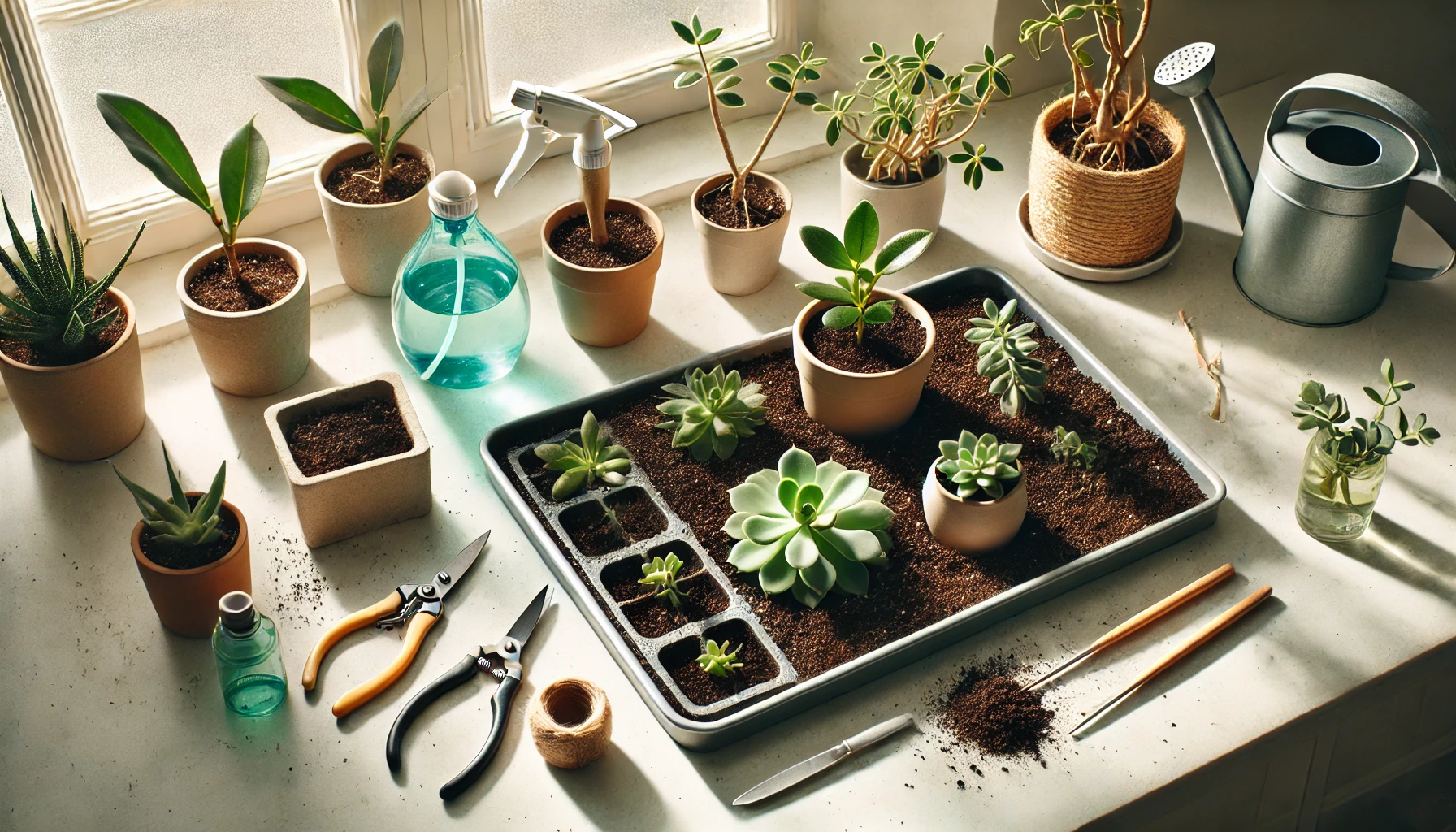Succulent propagation is a fun and rewarding way to expand your plant collection or share these resilient beauties with friends and family. With their ability to grow new plants from leaves, cuttings, or offsets, succulents make propagation an easy and satisfying process for beginners and experienced gardeners alike. This guide will walk you through the methods to propagate succulents successfully.
Why Propagate Succulents?
- Cost-Effective: Instead of buying new plants, you can grow them from your existing collection.
- Customization: Create unique arrangements or gifts using propagated succulents.
- Learning Opportunity: Propagation teaches you more about plant growth and care.
Methods of Succulent Propagation
1. Propagating from Leaves
This method works for succulents with thick, fleshy leaves, such as echeverias and jade plants.
Steps:
- Gently twist off a healthy leaf from the base of the plant. Ensure the leaf is whole, as damaged or torn leaves won’t propagate.
- Allow the leaf to dry for 1-3 days until the cut end calluses over. This prevents rotting.
- Place the leaf on top of well-draining soil in a shallow tray or pot. Do not bury the leaf.
- Mist the soil lightly every few days, keeping it slightly moist but not soggy.
- Tiny roots and a baby plant will start to grow from the base of the leaf within a few weeks. Once the baby plant is established, the original leaf will wither away, and you can transplant the new plant into its own pot.
2. Propagating from Stem Cuttings
This method is ideal for succulents that grow leggy or have long stems, like string of pearls or sedums.
Steps:
- Using clean scissors or a sharp knife, cut a healthy stem from the plant, leaving at least 2-4 inches of stem.
- Remove the bottom leaves to expose the stem.
- Let the cutting dry for a few days until the cut end calluses over.
- Insert the callused end into well-draining soil, ensuring at least an inch of the stem is buried.
- Water sparingly, only when the soil is dry. Roots will develop in 2-4 weeks, and new growth will appear.
3. Propagating from Offsets (Pups)
Many succulents, like aloe vera and hen-and-chicks, produce offsets (baby plants) around their base.
Steps:
- Gently remove the parent plant from its pot and locate the offsets.
- Detach the offsets by carefully twisting or cutting them away from the parent plant. Ensure the offsets have some roots attached.
- Allow the offsets to dry for a day before planting them in their own pots with fresh soil.
- Water lightly and place them in indirect sunlight.
4. Propagating in Water
While succulents prefer dry conditions, some types can be propagated in water for fun and observation.
Steps:
- Take a stem cutting and let it callus over for a day.
- Place the cutting in a glass of water, ensuring only the stem is submerged.
- Keep the glass in bright, indirect light.
- Roots will grow within a few weeks. Once the roots are about an inch long, transfer the cutting to soil.
Tips for Successful Propagation
- Use Well-Draining Soil: A mix of potting soil and sand or perlite is ideal for succulents.
- Provide Indirect Light: Avoid direct sunlight, which can scorch new growth.
- Be Patient: Succulent propagation takes time. Some plants may take weeks or months to show visible progress.
- Water Sparingly: Overwatering is a common mistake. Let the soil dry completely before watering.
- Sanitize Tools: Clean scissors or knives before use to prevent infections in your cuttings.
Common Challenges in Succulent Propagation
- Rotting Leaves or Stems: Ensure the cut ends are callused before planting and avoid overwatering.
- Slow Root Growth: Be patient and maintain consistent care. Use a rooting hormone if desired.
- Leggy Growth: Provide sufficient light to prevent etiolation.
Creative Uses for Propagated Succulents
- DIY Gifts: Arrange baby succulents in decorative pots for personalized gifts.
- Living Walls: Use propagated succulents to create a vertical garden.
- Miniature Gardens: Combine different varieties in terrariums or small planters for a unique display.
Succulent propagation is a rewarding experience that brings new life to your plant collection. With a little patience and care, you can transform leaves, stems, or offsets into thriving, beautiful plants.
